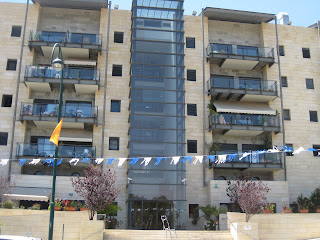The recent Oscar celebrations with the arrivals of film celebrities on the red carpet, have reminded me of my short visit to the czeck town of Karlo Vivary (Carlsbad) some six months ago. While there, I was fascinated by the architecture and history of Grandhotel Pupp . This hotel hosts the annual International Film Festival and the cinema people that attend it, and is also temporary home to vacationing actors. The hotel was used in several films, the most known one - James Bond's 'Casino Royale'.
It started as the Saxony Hall in 1701. A guy named Jan Pop (german Johan Pupp) came to Carlsbad where he worked with a confectioner. He married his employer's daughter. She managed to buy partial ownership of this Saxony Hall and the nearby Bohemia Hall built later. These halls and a third one purchased by Pupp himself will later become the Grandhotel Pupp, which is now part of Pupp Complex. The impressive building was built in the 18th century in Baroque style ; its rooms renovated in the late nineties.

entrance
Walking on the carpets and through the rooms of Grandhotel Pupp is to walk in the steps of history. Throughout its history of three centuries, this hotel has hosted famous people from all walks of life: political ,religious, cultural , financial, scientific- from Europe and beyond that. Here are a few names: Bismark (german chancellor), russian Czar Peter the Great, Carlos King of Spain, Harald King of Norway, composers: Beethoven, Mozart, Bach, Liszt, Dvorzack, actors Gregory Peck, Michael Douglas, Whoopi Goldberg, Alan Alda, Ornela Muti, psychoanalyst Dr. Freud.
Grandhotel Pupp is a luxurious hotel. It has more than two hundred regular rooms, suites, several apartments dedicated to very famous people, a presidential room, an imperial room, a spa center, casino, golf course & club, restaurants, bars, cafe, conference room, halls for special & festive events.

woman with jug- symbol of thermal baths & spas
Now back to the 2011 Oscar ceremony - Colin Firth is sooooo handsome , talented , and...british! I'm glad that the Oscar went to both "the King's speech" movie and its star .
























































